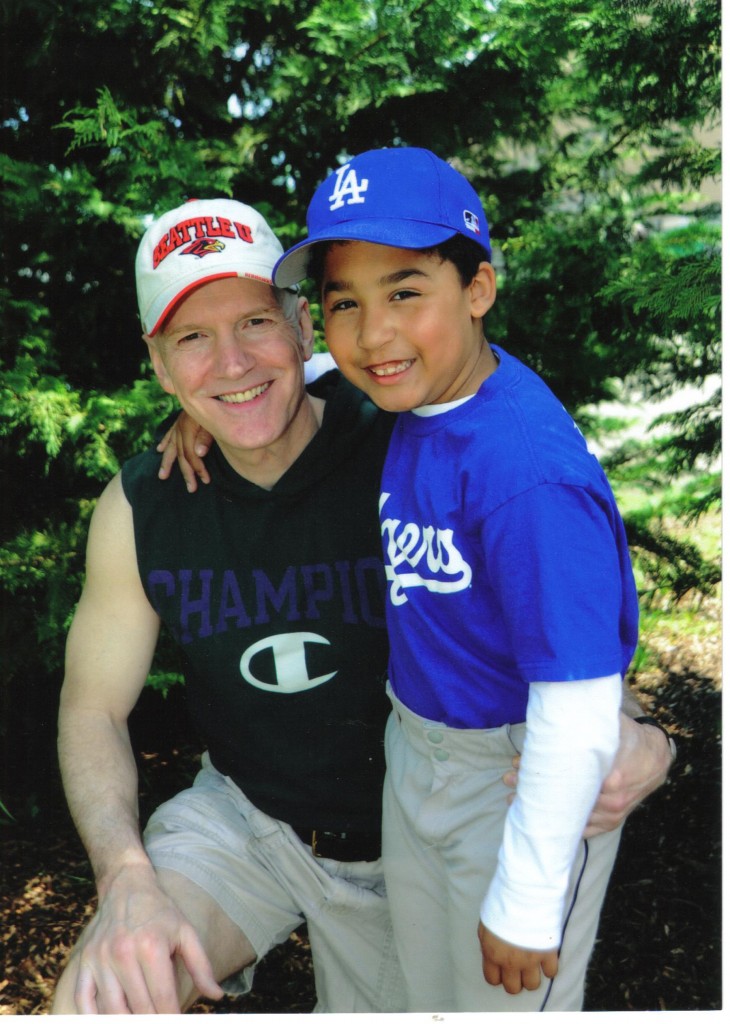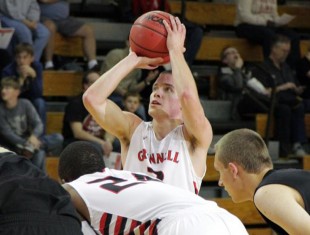Clay Moyle and son Caleb
I’m not sure why, but for some reason I had never been all that curious about George “Kid” Lavigne, a.k.a. “The Saginaw Kid.” so I wouldn’t have been able to tell anyone very much about him had I been asked before now.
But that void in boxing history has been filled for me as a result of now having read Lauren Chouinard’s fine new book about his famous second cousin, four times removed.
Lauren describes Lavigne as a relentless fighter and stresses the fact that is what he really was, a fighter much more so than a boxer.
As I read about the early accounts of his fights another fighter by the name of “Battling” Nelson immediately came to mind. The two lightweight champions were in fact similar in a numbers of ways and actually fought against one another, albeit when Lavigne was well past his prime.
The Kid began boxing professionally in 1886, 10years prior to Nelson, but like the Battler he was a fighter who employed little science, was more than willing to absorb two blows for every one he could deliver himself and simply overwhelmed his opponents with his stamina and capacity to accept punishment.
At his peak, despite the fact he was only 5-foot-3 ½ tall and often gave up weight and reach to the majority of his opponents, it’s clear that he was darn near unbeatable at his weight as a result.
Lavigne was a punishing body puncher and carried a punch that one wouldn’t expect from a man his size. It seems evident that the decision on the part of the great lightweight champion Jack McAuliffe to retire when he did had more than a little to do with the timing of Lavigne’s rise in the lightweight class.
It also seems pretty apparent that the great Joe Gans went out of his way to avoid a match-up with the Kid.
Who could blame them for wanting no part of Lavigne? Before he took to drink it sounds as though the diminutive tireless fighter was a holy terror inside the ropes, seemingly impervious to pain and possessing an indomitable will to win.
Lavigne debuted as a professional on September 7, 1886 with a first round knockout victory over Morris McNally. It was over 12 ½ years later before he suffered his first defeat, at the hands of “Mysterious” Billy Smith on March 10, 1899!
Prior to suffering a technical knockout to Smith, Lavigne engaged in 54 contests without taking a count due to a knockdown and engaged in a number of epic battles against greats, including the likes of Young Griffo and Joe Walcott (twice apiece) and England’s Dick Burge.
On December 2, 1895, the Kid met Walcott for the first time and Lauren advises that even his friends and admirers shook their heads in dismay in the belief their man had been overmatched against the Barbados Demon.
So confident were Walcott and his manager that they agreed Walcott would have to knock Lavigne out within 15 rounds or forfeit the entire purse.
Early on, it appeared as though Lavigne’s supporter’s worst fears were warranted when the favored Walcott had things all his way. By the sixth round, John L. Sullivan who was witnessing the contest at ringside, urged the referee to bring an end to the slaughter. Lavigne overheard the request and insisted he’d lick Walcott yet.
Sure enough, the tide began to turn in the seventh round as Lavigne began fighting like a man possessed and tore into Walcott with a tremendous attack to the body. The two men fought at a frenzied pace for the next several rounds while Walcott began to weaken and Lavigne seemed to grow stronger.
Walcott’s manager, Tom O’Rourke, marveled at Lavigne’s ability to withstand punishment. By the end of the 11th round Walcott was looking for a way out and asked his corner to throw in the towel, realizing he would never knock Lavigne out.
But his corner refused and the fight went the full 15-rounds, and the bout was awarded to the Kid on points.
O’Rourke would later say of the Kid that he “was made of rawhide and iron, a bulldog in attack and bronco in staying power. No gamer, tougher man ever drew on a glove than the Michigan lumberjack.”
As if to prove his victory over Walcott was no fluke, Lavigne repeated the trick just shy of two years later when he delivered a 12-round technical knockout win in a world lightweight title contest.
The author makes a convincing case that Lavigne should be considered the first true world lightweight champion under the Marquis of Queensbury rules as a result of his rugged 17-round knockout victory over much heavier Dick Burge in London, England on June 1, 1896.
By all accounts it appears quite likely that Lavigne’s title reign might have lasted a few years longer than it did had he been able to lay off the booze. But he developed a taste for the stuff and as he began to party more frequently and train even less his performances deteriorated and he rapidly faded from the spotlight after 1899.
Lauren describes his distant relative as a regular Dr. Jekyll and Mr. Hyde when it came to the change in behaviors he exhibited when sober as opposed to when under the influence of alcohol. There are numerous accounts throughout the book of arrests and wife beatings that took place while Lavigne was drinking heavily.
There were multiple attempts on his part to lay off the sauce in attempts to mount comebacks to the ring after the loss of his title, but they ultimately failed and it wasn’t until the latter part of his life that Lavigne was finally able to put the bottle aside for good and defeat his greatest opponent.
When he passed in 1928, Sam Austin of the Police Gazette voiced the opinion that there was never a fighter in his weight class his equal.
“If he had taken a continuous passage on the water wagon there is no telling how far he could have gone without being beaten,” Austin added.
Jack McAuliffe called him the greatest lightweight of all and James Corbett expressed the opinion that the ring would never see his equal in that weight class.
I thought the book was well researched, an entertaining and educational read and highly recommend it to anyone with an interest in learning more about this somewhat forgotten great and the era he fought in.
ISBN 978-1-4575-1840-9. 423-pages. $29.95
First published in 2013 by Dog Ear Publishing
http://www.kidlavigne.com/book.php


